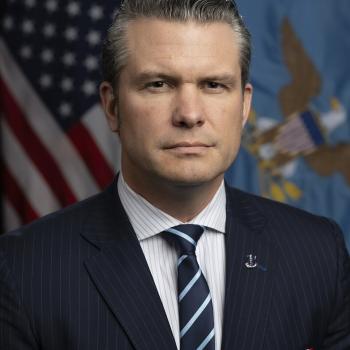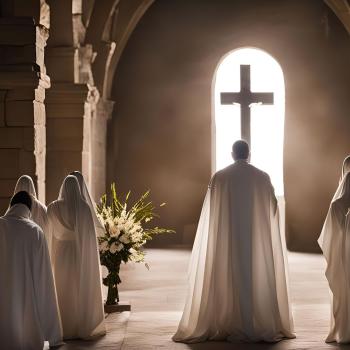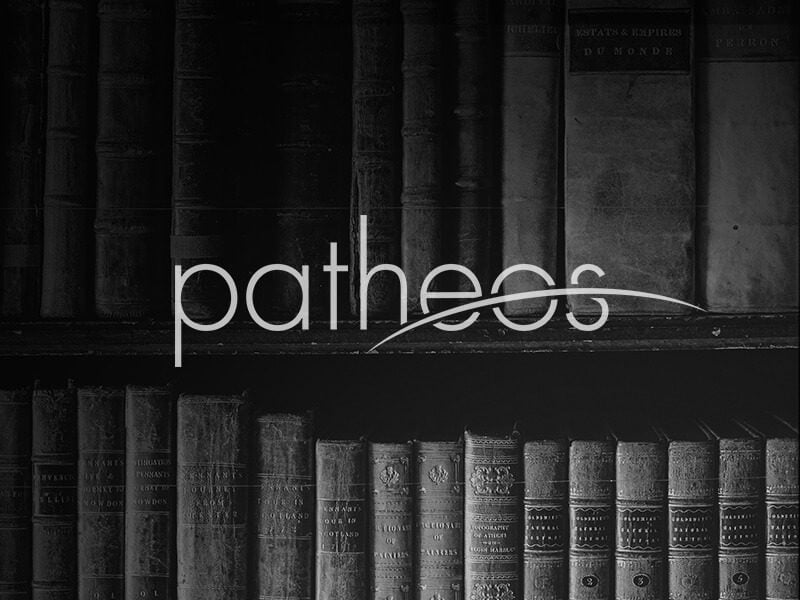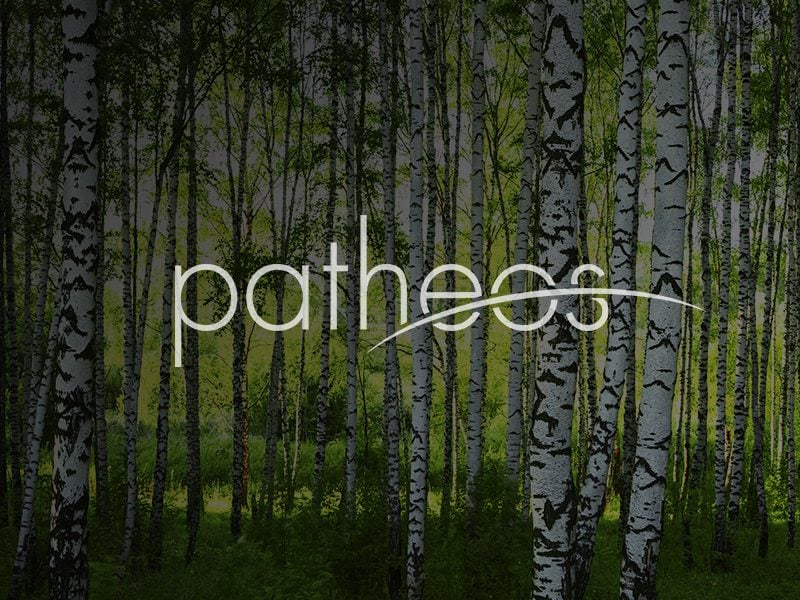This is a fine little series on the Rad Trad weirdness that is a major (not the only) contributor to Cult of Francis Hatred that now dominates the demographic which, a few short years ago, use to boast its complete fidelity to the Magisterium and which now is the single greatest internal enemy of the Church in the present hour. Other factors–political, cultural, economic, social, racial, and class also contribute to rise of this nutty Right Wing Cult of Hatred for the Holy Father, but this is a major theological force:
In her book Waiting for the Apocalypse: A Memoir of Faith and Family (2009), Veronica Chater provides a moving account of what it was like to grow up in a traditionalist Catholic family during the 1970s. Her father, Lyle J. Arnold, Jr. (who was a regular contributor to the TFP-inspired Tradition in Action website until his death in 2014) brought his family first into the world of the SSPX and then into that of Tradition, Family and Property. The worldview that he adhered to, and which contributed to some of the dysfunction she details, was shaped in part by the ideology of TFP and their distinctive apocalyptic ideas. Describing the TFP members who visited their family, she writes:
They talked about the coming Chastisement, although they called it the Bagarre, which was their word for the Chastisement. Bagarre was French for “Brawl” with a capital B. Uncontrollable chaos. Free-for-all fighting in the streets. When they talked about the Bagarre, they included Our Lady as if she was going to be right there with them, shouting from the rooftops, her robes flowing—“ with Our Lady’s help,” they’d say, or, “by the grace of Our Lady,” or, “if Our Lady wishes it,” and I could see by Dad’s expression what he was thinking: here was the army of Our Lady that he’d been dreaming of.
After two of her brothers became involved in the TFP and absorbed its teachings, they were able to tell her more of what they learned about the “Bagarre”:
The Bagarre would happen sometime in the 1980s. No one knew which year exactly. . . . A giant cross the color of blood would appear in the sky as a warning. The temperature on the planet would drop to freezing. And then complete and utter darkness would fall. Hell would be emptied and the demons would roam the earth.
[…]
Along with physical darkness would be spiritual darkness. People would give in to despair. They’d die of terror and suicide. Only the truly faithful would survive. Then, when the Three Days of Darkness were over, we could open our windows and witness the devastation outside. It would be horrible. The whole world would be covered in cadavers. But the world would be purified, and the believers would bury the dead and rejoice to be among the living. It would be the beginning of a new era of peace and tranquility—literally a heaven on earth. […] And all this would happen in our lifetime. That’s why it was so important to be prepared.
These passages capture the apocalyptic message of TFP, which is only hinted at in Plinio Corrêa de Oliveira’s Revolution and Counter-Revolution but can be found in many of his published talks and in TFP materials. One key element of this vision is “the Bagarre.” This refers to an impending period of great political confusion and destruction. The other key element is the “new era of peace and tranquility,” or what is called the “Reign of Mary” in TFP language. This is the period that will follow the Bagarre, in which TFP will be instrumental in bringing about the restoration of Christendom.
Both of these ideas are the product of a fusion of the Second Secret of Fatima and the writings of St. Louis de Montfort. The Second Secret contains a description of a future Chastisement, during which “The good will be martyred; the Holy Father will have much to suffer; various nations will be annihilated.” This is the time of the Bagarre. Eventually, though, the Chastisement will end: “In the end, my Immaculate Heart will triumph. The Holy Father will consecrate Russia to me, and she shall be converted, and a period of peace will be granted to the world.” This is the “Reign of Mary,” and the name for it is derived from the opening of St. Louis de Montfort’s A Treatise on the True Devotion to the Blessed Virgin: “It is by the most holy Virgin Mary that Jesus has come into the world, and it is also by her that He has to reign in the world” (1). The Reign of Mary, in the context of TFP, is not a mysterious metaphor, open to interpretation, but instead has some very this-worldly implications. As Roberto de Mattei states in his biography of Corrêa de Oliveira, “St Louis de Montfort affirms that the Reign of Mary will be a time of flourishing of the Church such as never has been known in history.” The TFP are thus devoted to fighting in the Bagarre, under the guidance of Mary, in order to establish the domination of the Church in the aftermath: a sort of Integralist (in the old sense of the term) utopia.
As evidence of this apocalyptic vision we can look to this webpage which contains the text of an influential 1970 speech by Corrêa de Oliveira along with an accompanying video by TFP Student Action. This speech, in which Corrêa de Oliveira describes the past, present, and future of the Church and the TFP movement in the modern world, captures perfectly his apocalypticism, his essentially dualistic worldview, and his understanding of the role of the TFP. He starts by describing the role of the Church in relation to modern society (or the “city”):
Imagine a city completely given over to disorder and chaos; a city immersed in a confusing and cacophonous noise; a city wallowing in blasphemy and immorality. Imagine, in the midst of this city, the bells of hundreds of churches asking God for either mercy or justice to put an end to so many abominations and save the souls now being lost. Imagine these bells, rung by faithful hands, trying to smother the blasphemous noise of the city. There’s a conflict between the sacral harmony of those bells and the spurious voices rising from the earth.
There is no mixing of the two realms of the city. There is only the rarified upper realm of “sacral harmony” represented by the Church, and below it a swamp of “blasphemy and immorality.” The realm of blasphemy is that of the Revolution, and the sacral realm is the Counter-Revolution. It is the duty of TFP to inhabit and protect the dwindling sacral realm, and to ring the bells, until the day of cleansing arrives:
In her supplicant omnipotence, [Our Lady] watches every development, step by step, because she wants to make her glory known and felt by everyone at a certain moment. This is the moment when the last few bells are still ringing and their number is becoming so small that hardly anyone hears them amid the general confusion. This is the moment when Our Lady will intervene.
At this point the Counter-Revolution will “begin a re-conquest, a work that brings all disorder to an end. There they take up the sword of truth.” TFP will presumably lead the Counter-Revolution, to wage a final war against evil with the help of Our Lady:
Our Lady has put together her first army. At this very moment evil attempts to stifle this army and stamp out the sound of those last few bells, but from the pinnacle of heaven Our Lady intervenes with her angels.
She scatters the evil ones and establishes her glory and when her glory begins and her kingdom starts to shine forth among men, a bell continues to ring on.
All in all, TFP is nothing less than Corrêa de Oliveira’s attempt to make this fantasy a concrete reality—to turn ordinary Catholics into bell-ringing soldiers anticipating the Reign of Mary. And what a seductive myth for a young Catholic! It is the myth that all TFP members must carry in their hearts, wherever they go and whatever they do:
In today’s chaotic world, in your cities, states and countries you will be like so many other bells of tradition ringing away. The galvanizing force of these appeals of Our Lady will make themselves felt around you in the circles you frequent. There’ll be no lack of attacks from the devil. The father of darkness will spread slander and hearsay against you.
But you are the bell towers that ring amid the darkness, cacophony and confusion, proclaiming the sound of Tradition from the Catholic past and taking this sound forward to the dawn of the Reign of Mary.
In talking about this myth in such a skeptical way I am not saying that the Second Secret of Fatima is nonsense, but only that the TFP myth is a dangerously specific and presumptuous prediction of the future. The great problem with such myths is that when they solidify and take hold of a person or group of people they have a tendency to twist reality. In my post on Truth and Myth and the influence of Georges Sorel in the Church I described how apocalyptic social myths have played a role in radical twentieth-century movements on both the political left and right, and it is hard to think of a better example of a group possessed by an apocalyptic social myth than TFP. Even though for many decades the Bagarre and Reign of Mary have failed to materialize, it does not seem to have significantly changed the perspective of the TFP and related groups. The myth provides the impetus for group cohesion. Like other Catholic groups that cling to an apocalyptic vision, or Evangelicals awaiting the Rapture, TFP relies upon the idea of impending divine intervention for its very survival as a movement.
Do read the whole series–and everything else at WPI–if you want to actually learn about the Faith from a source that is level-headed, sane, orthodox, and charitable.
I will have some concluding thoughts tomorrow about the strange amalgam of persecution complexes, conspiracy theories, and nutty alloying of Evangelicalism and Catholic Right Wingery that has overtaken the Francis Haters.














